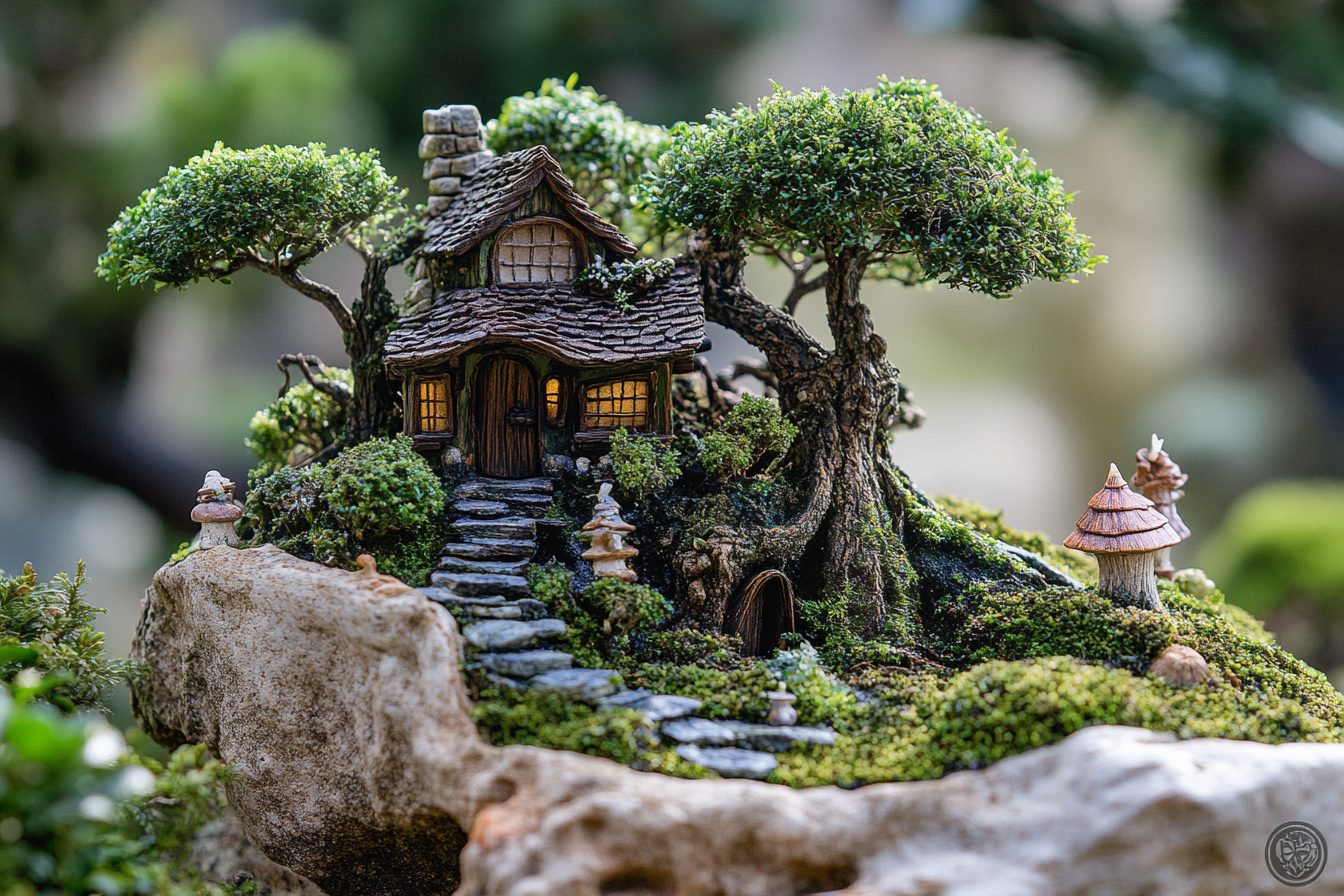Embarking on the creation of a fairy garden is like opening a door to a miniature enchanted world. These tiny havens are perfect for adding a splash of magic and creativity to any space, large or small. They offer a delightful escape, turning ordinary gardens into whimsical landscapes.
Fairy gardens capture the imagination of both the young and the young at heart, making them wonderful projects for families or anyone who cherishes the charm of the fantastical. They blend the beauty of nature with the allure of mythical tales, creating scenes that seem to whisper stories of magical happenings.
Whether nestled in a cozy corner of your living room or sprawling across a backyard, fairy gardens invite you to pause and appreciate a world crafted from dreams. Let’s dive into some enchanting fairy garden ideas that will transform your surroundings into a mystical retreat.
1. Container Fairy Garden
Start with a container that speaks to your style. This can be anything from a broken pot, a wooden crate, to a wide-mouthed planter. Opt for small-leaved plants like mosses, sedums, or baby tears that maintain the miniature scale. Populate your garden with tiny houses, fairy figures, and small furniture to bring the scene to life.
Position your container fairy garden on a patio table or a windowsill where it can be admired from indoors as well. This placement allows the delicate details of the mini landscape to be appreciated up close.
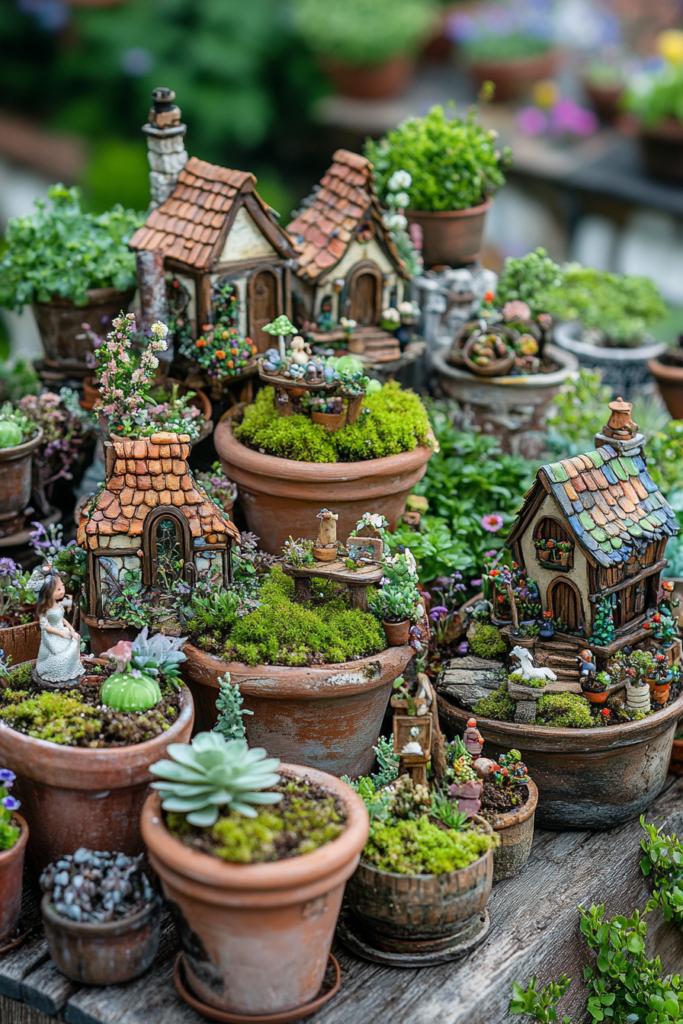
2. Natural Fairy Garden
Use natural elements like rocks, tree stumps, and existing plants to create a fairy landscape that feels like part of your garden’s natural topography. Complement the natural beauty with fairy elements that blend into the surroundings, like wooden doors that attach to tree trunks or tiny hammocks strung between branches.
A natural fairy garden feels especially magical because it’s almost as if the fairies really are hiding in your garden, blending the line between fantasy and reality. This integration with nature creates a more immersive experience.
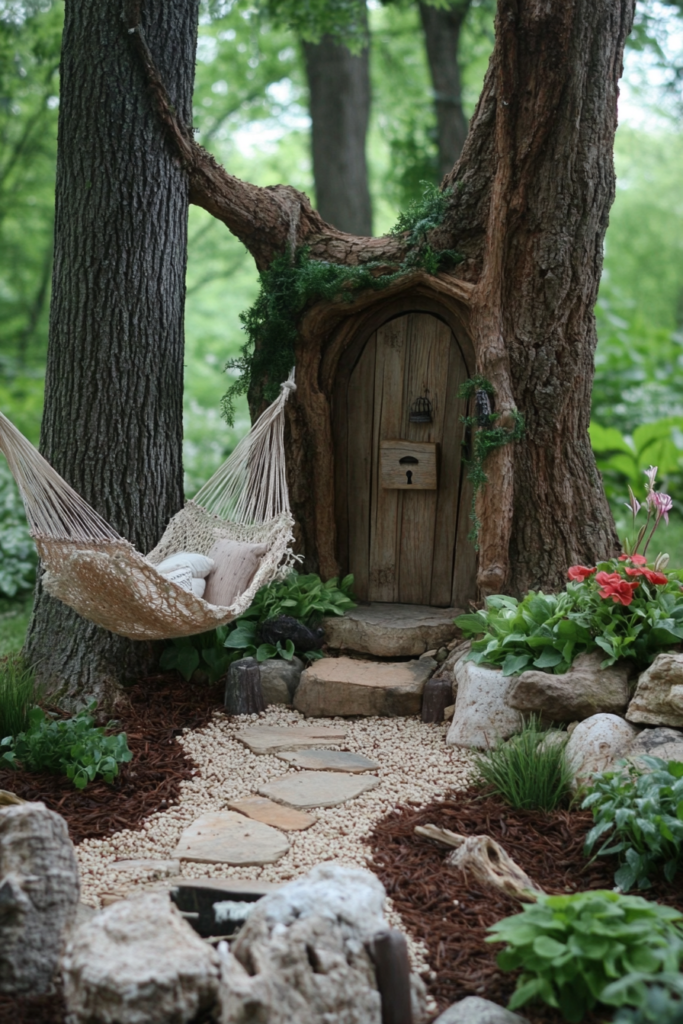
3. Themed Fairy Gardens
Choose a theme that excites you, such as a beach escape using sand, shells, and a small piece of blue glass for a water effect. Add a beach chair and umbrella for that seaside vibe. Alternatively, consider an enchanted forest theme with lots of green plants, wood accessories, and figures like gnomes and woodland animals.
Themes can guide your choices for plants and decorations, making the design process simpler and more cohesive. A themed garden also creates a captivating story that visitors and viewers can follow, adding depth to the tiny world you’ve created.
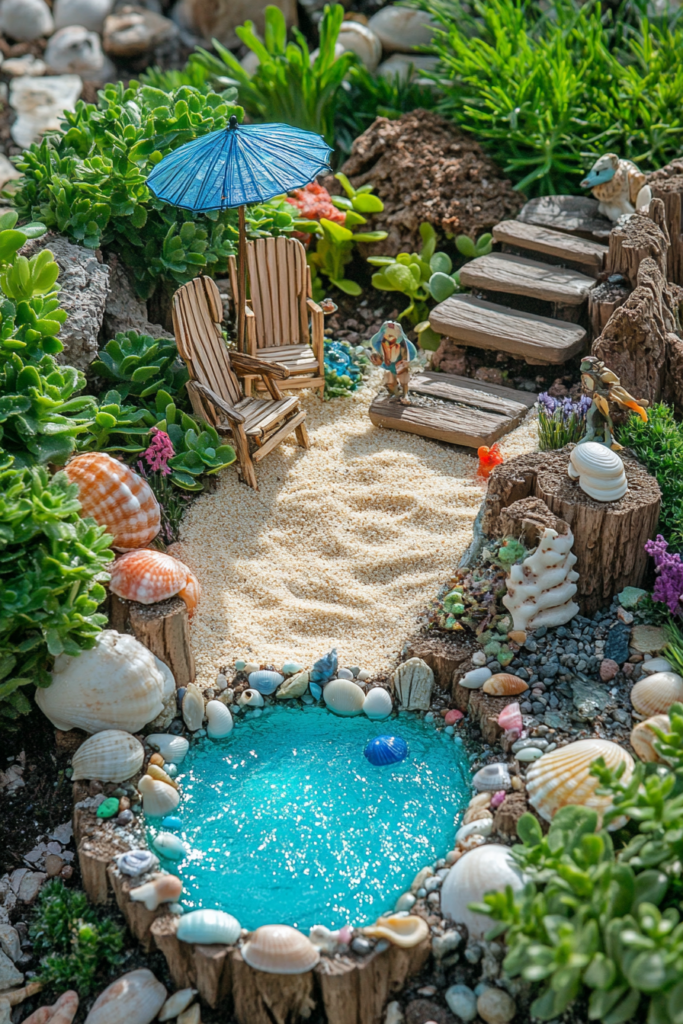
4. Fairy Garden Kits
Fairy garden kits come with everything you need, making them perfect for beginners. They take out the guesswork and still allow for personal touches. Even with a kit, you can add your own flair with extra accessories or by painting the provided figures and houses.
Kits are ideal because they provide a quick start to your fairy gardening adventure, offering both convenience and the opportunity for customization. This makes it easy to jump right into the fun part: decorating and personalizing.
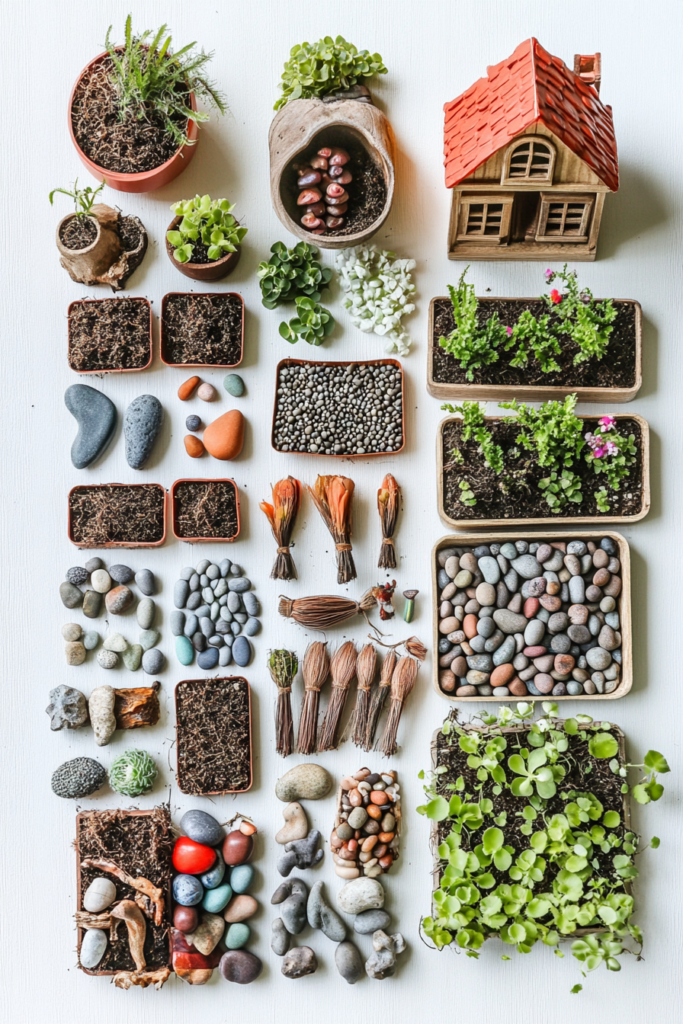
5. Seasonal Fairy Gardens
Adapt your fairy garden to the seasons to keep the magic alive all year round. In spring, bright flowers and pastel miniatures can refresh the display. Come autumn, introduce fall colors, pumpkins, and little scarecrows to reflect the changing seasons.
This approach not only revitalizes your fairy garden regularly but also makes for a fun, recurring family project. Each season brings its own charm and challenges, keeping your creative juices flowing.
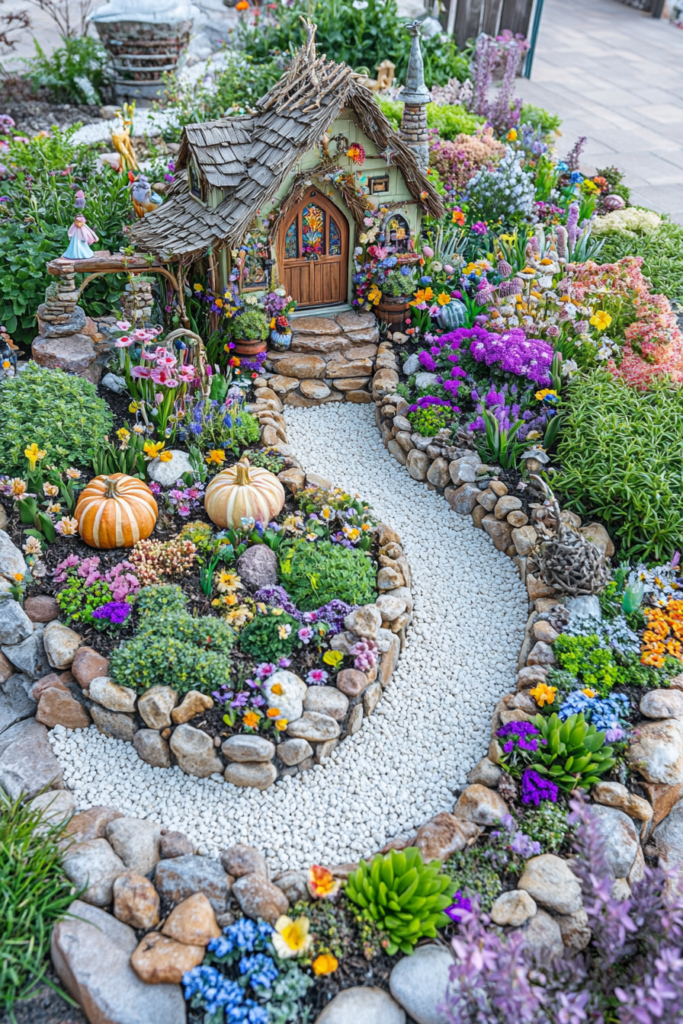
6. Fairy Garden for Small Spaces
If you’re short on floor space, consider using wall planters to create a fairy garden. This adds a vertical interest to your space and makes the fairy garden a focal point from all angles. Small planters are also ideal, fitting easily on a ledge or windowsill, yet they can be just as enchanting as larger setups.
Choose compact elements and keep designs simple for small spaces. Less is more when you’re working with limited room, ensuring that each detail stands out without overwhelming the small area.
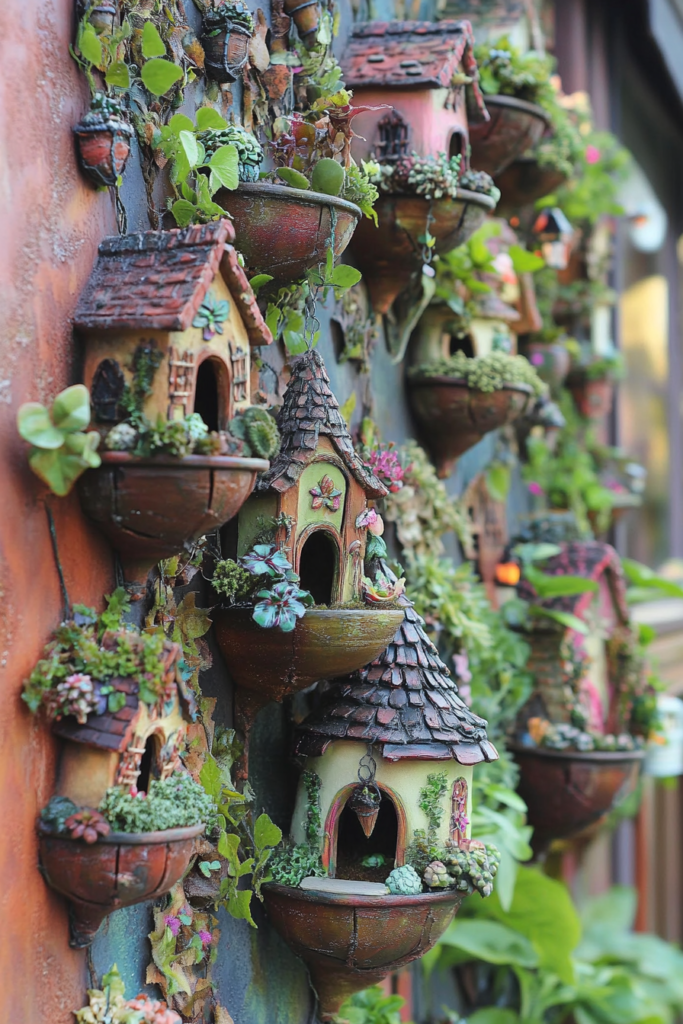
7. Interactive Fairy Gardens
Add little doors on hinges to make the garden come alive and create little pathways that lead to different parts of the garden, inviting closer inspection. Interactive features make your fairy garden not just a visual delight, but a tactile experience as well.
These playful elements encourage visitors, especially children, to interact with the garden, making it a more dynamic and engaging experience. It transforms the garden from a static display into a living part of your home.
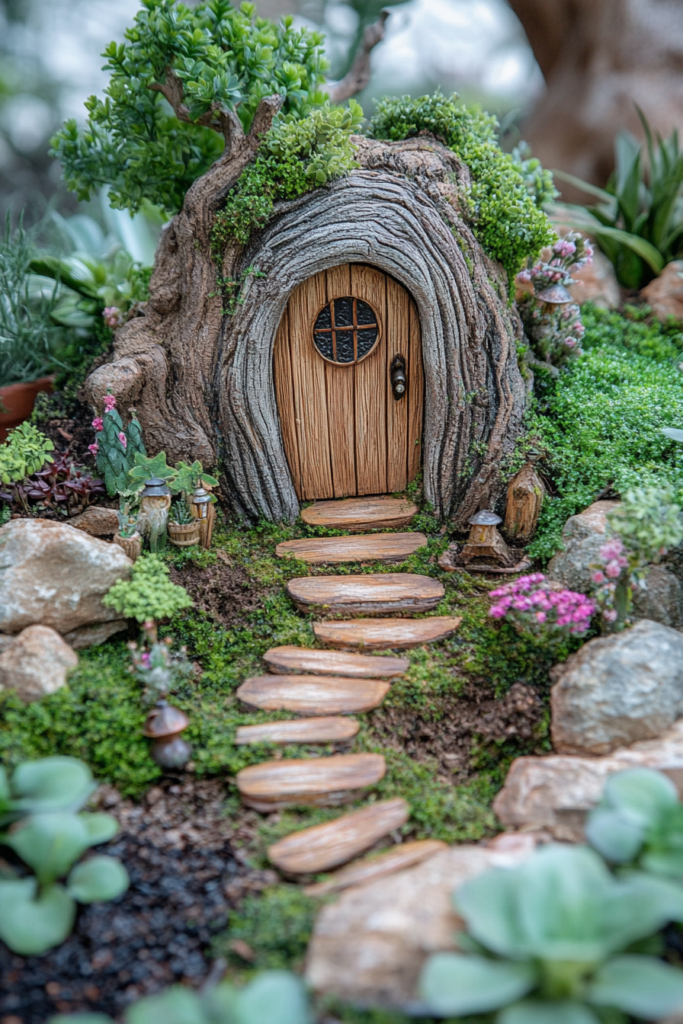
8. Water Feature Fairy Garden
Incorporate shallow dishes or waterproof liners to create mini ponds and streams surrounded by pebbles and plants. Pick plants that thrive in moist environments like ferns or Irish moss to enhance the water theme. Water features bring a sense of calm and realism to your fairy garden, making it a truly serene space.
Adding water elements introduces soothing sounds and reflective surfaces, enhancing the sensory experience of your garden. This not only beautifies the space but also creates a tranquil atmosphere.
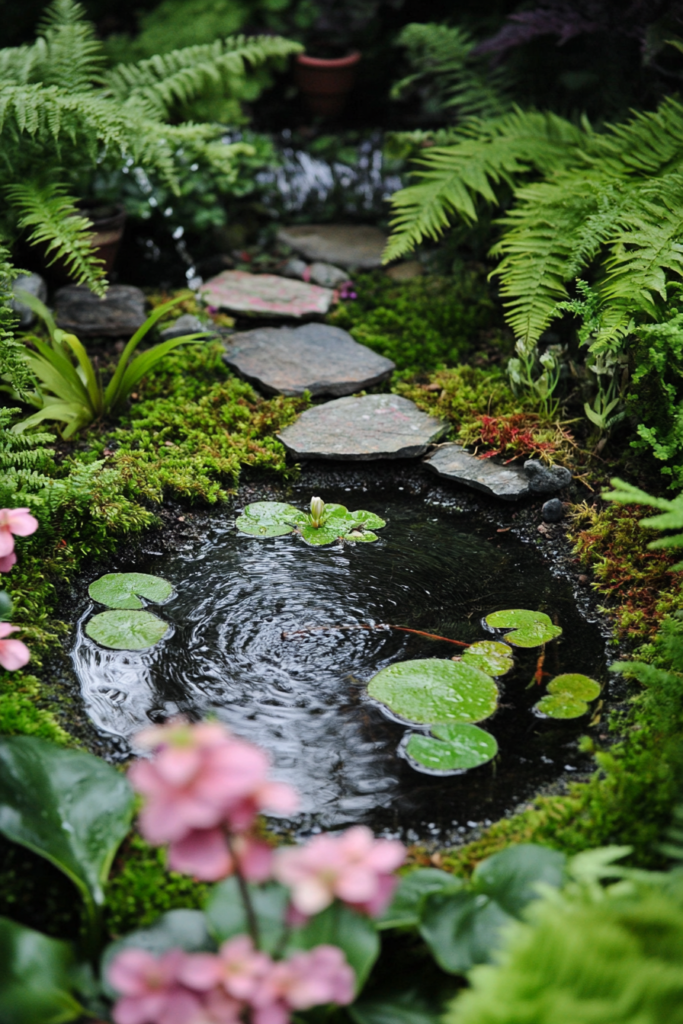
9. Edible Fairy Garden
Plant herbs like thyme, basil, and cilantro along with edible flowers such as nasturtiums and violets. This garden is not only charming but also practical. Use your harvest to flavor your meals, blending functionality with whimsy.
An edible fairy garden is a perfect combination of utility and fantasy, encouraging you to use your garden daily. It brings the enchantment of fairy tales to your everyday meals and offers a delightful twist on the traditional kitchen garden.
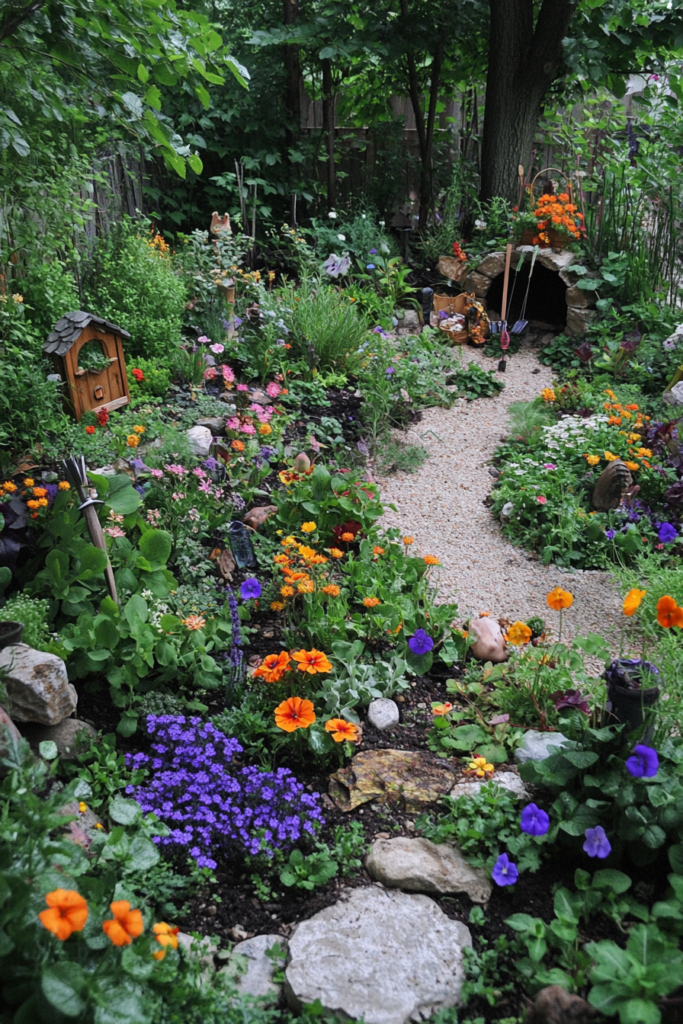
10. Hanging Fairy Garden
Use hanging pots to save space and add a magical floating effect. Enhance the floating sensation with fairy lights that illuminate your garden at dusk. This adds a vertical interest to your space and makes the fairy garden a focal point from all angles.
Hanging your fairy garden is not just about saving space; it’s about creating a magical floating island that captures the imagination. The addition of lights transforms it into a luminous spectacle, especially enchanting in the evening hours.
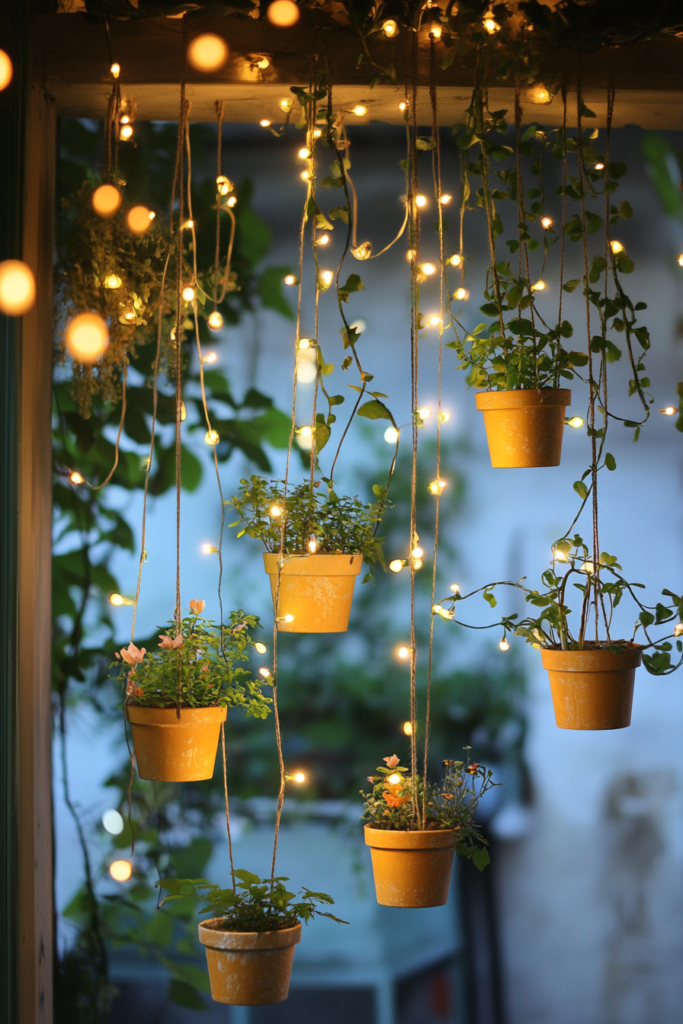
11. Fairy Garden in a Jar
Layer sand, soil, and charcoal in a clear jar. Add small plants and miniature accessories. Choose plants that thrive in humid, enclosed environments like mosses and air plants. A jar provides a 360-degree view of your miniature fairy world, perfect for display on any table or shelf.
Creating a fairy garden in a jar is like crafting a living snow globe. It’s compact, portable, and incredibly charming, offering a glimpse into a tiny, perfectly contained universe.
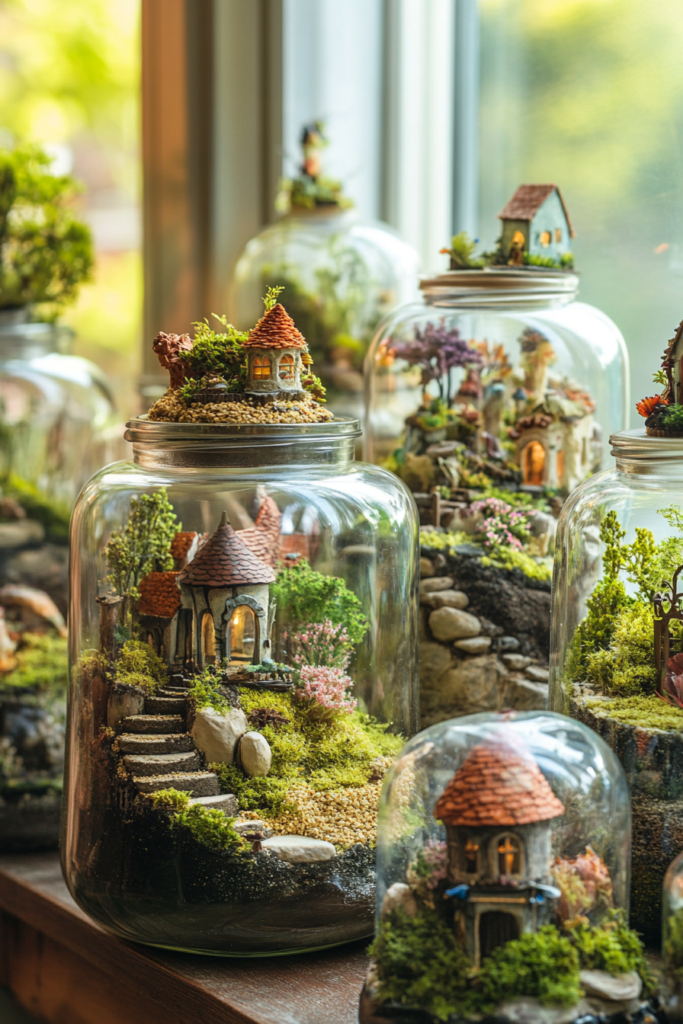
12. Wheelbarrow Fairy Garden
Use an old or unused wheelbarrow as a container for a large, mobile fairy garden. The mobility of the wheelbarrow allows you to shift your fairy garden into the sun or shade as necessary. This approach adds a rustic charm and the practicality of mobility to your fairy gardening.
A wheelbarrow fairy garden is ideal for those who love to change their garden’s location based on the season or even their mood. It’s a functional and whimsical addition to any garden.
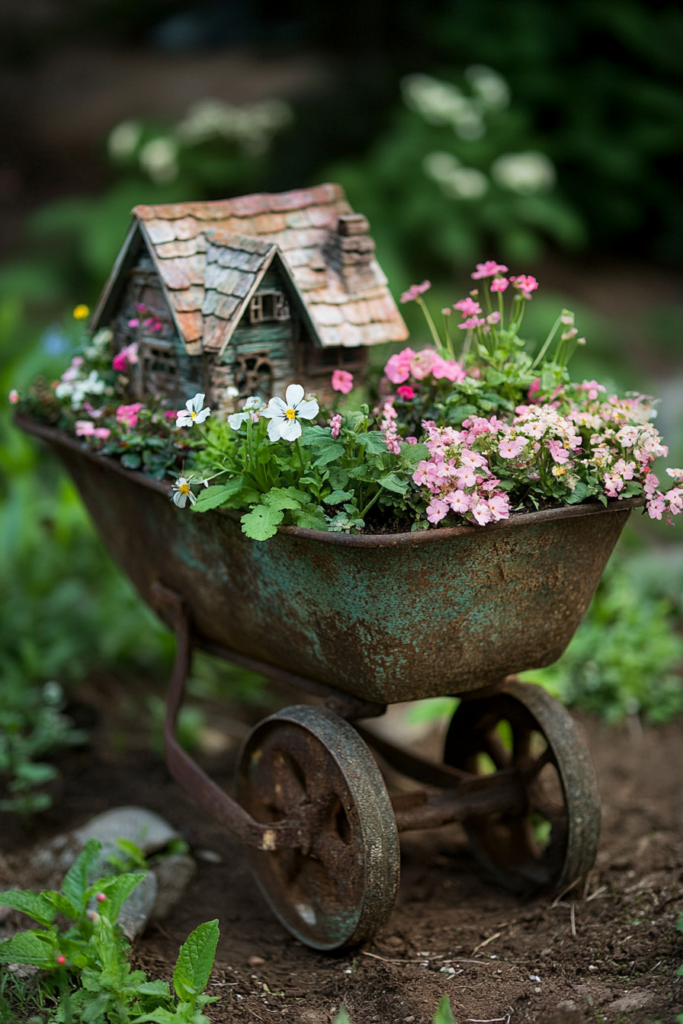
13. Desert Fairy Garden
Choose desert-loving plants that require minimal watering, such as succulents and cacti. Use sand as a base and decorate with various stones and pebbles for an authentic desert feel. A desert fairy garden is perfect for those who appreciate the beauty of arid landscapes but prefer a low-maintenance project.
This type of garden is not only easy to care for but also brings a unique aesthetic to your fairy gardening. It’s a little piece of the rugged desert brought right to your home.
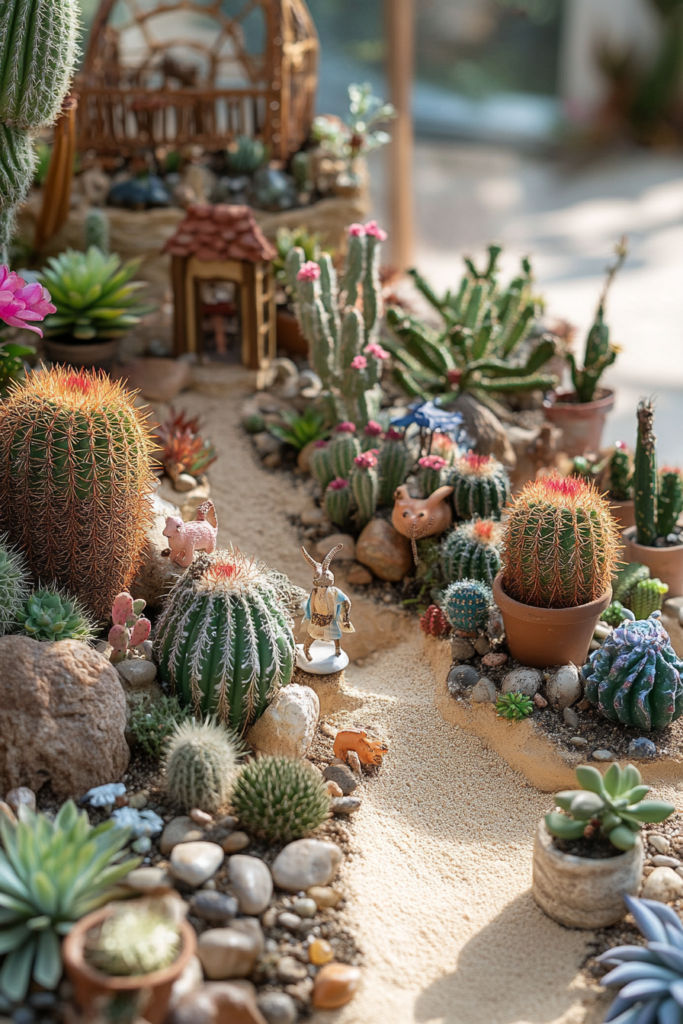
14. Fairy Garden under a Tree
Integrate the tree’s roots into your design, using them as natural hills and valleys. Plant hostas, ferns, and other shade-tolerant vegetation. This idea merges the fairy garden with your existing landscape, creating a seamless integration with nature.
Setting up a fairy garden under a tree utilizes the natural shade and beauty of the tree, making it feel like a natural part of your garden. It’s a magical, shaded retreat that looks like it’s been part of the landscape for years.
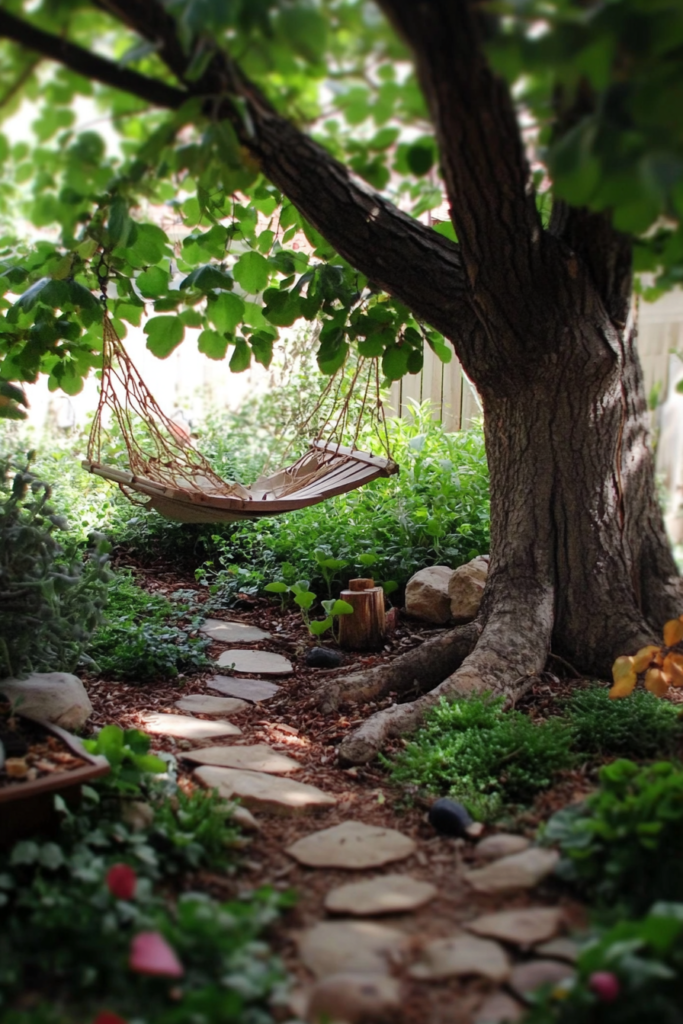
15. Bonsai Fairy Garden
Use bonsai trees to create a wooded landscape on a tiny scale. Add miniature houses and tools to match the size of the bonsai for a proportionate look. Bonsai gardening is an art that requires patience and precision, much like crafting a detailed fairy garden.
The combination of bonsai and fairy elements results in a serene and artistic display. It’s a peaceful, miniature forest that you can cultivate and admire.
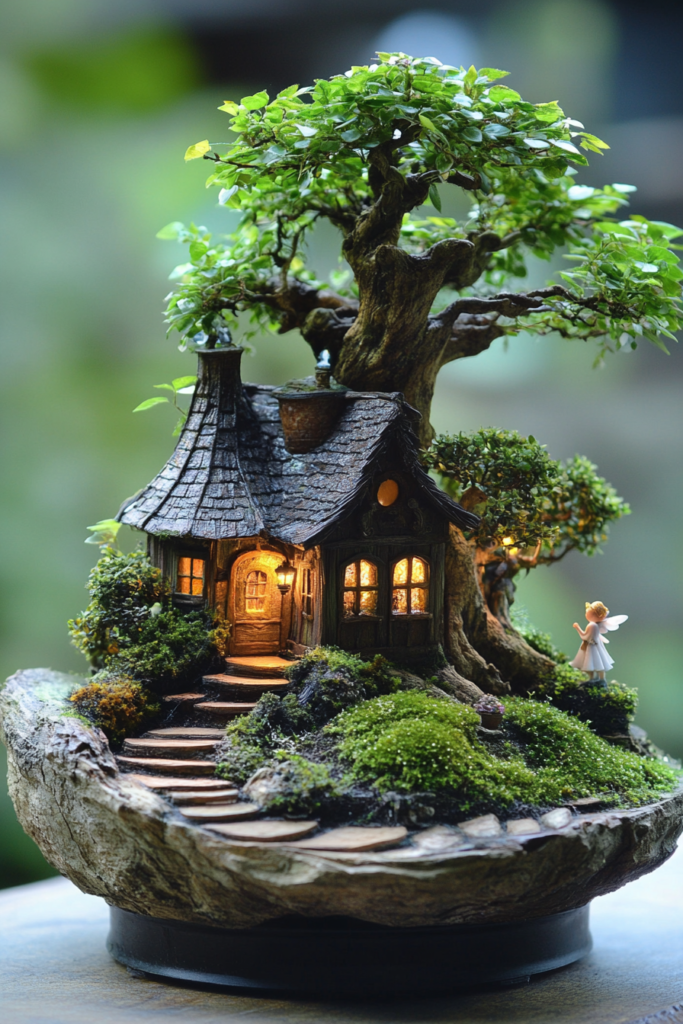
16. DIY Fairy Furniture Garden
Make chairs and tables from twigs and hot glue. Use leaves, acorns, and stones to make decorations and other furniture pieces. This idea is perfect for families, especially children, to engage in crafting and enjoying their own creations in the garden.
Crafting your own fairy furniture is not just a fun activity; it allows for personalization and creativity. Each piece becomes a testament to your imagination and effort, making the fairy garden truly your own.
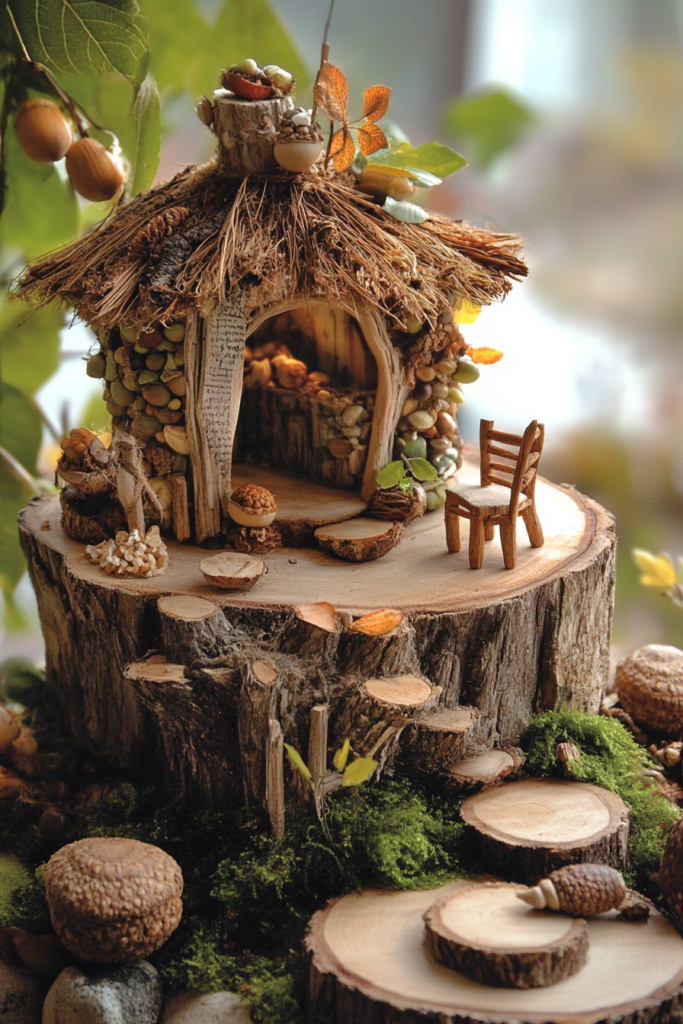
17. Winter Wonderland Fairy Garden
Use white gravel and silver miniatures to simulate snow and ice. Plant evergreens and holly to keep your fairy garden vibrant during colder months. A winter-themed fairy garden brings the magic of the season to your home, providing a festive touch.
This type of garden transforms your space into a miniature arctic fairyland. It’s a whimsical way to celebrate winter’s beauty, right in your own backyard.
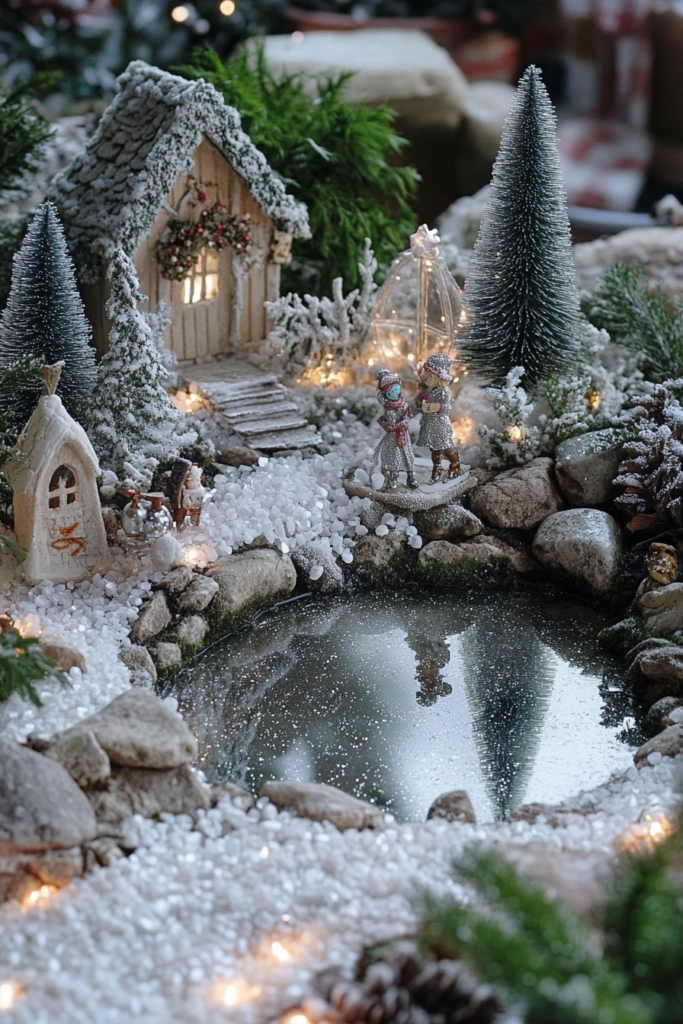
18. Zen Fairy Garden
Create sand patterns around your fairy structures with mini Zen rakes. Incorporate small Buddha figures and smooth stones to enhance the zen atmosphere. This garden promotes relaxation and mindfulness, making it a peaceful retreat in your own space.
A Zen fairy garden is not just a visual delight; it’s a place of calm and contemplation. It invites you to pause and appreciate the simpler aspects of beauty and serenity.

19 Rooftop Fairy Garden
Transform unused rooftop space into a delightful green area with container fairy gardens. Choose plants that can withstand potentially harsher wind and sun conditions typical of rooftop environments. This idea allows city dwellers to enjoy fairy gardening without a traditional yard.
Rooftop fairy gardens offer a breath of fresh air high above the city streets. They turn unused spaces into vibrant green retreats, proving that you don’t need a traditional garden to dive into the world of fairy gardening.
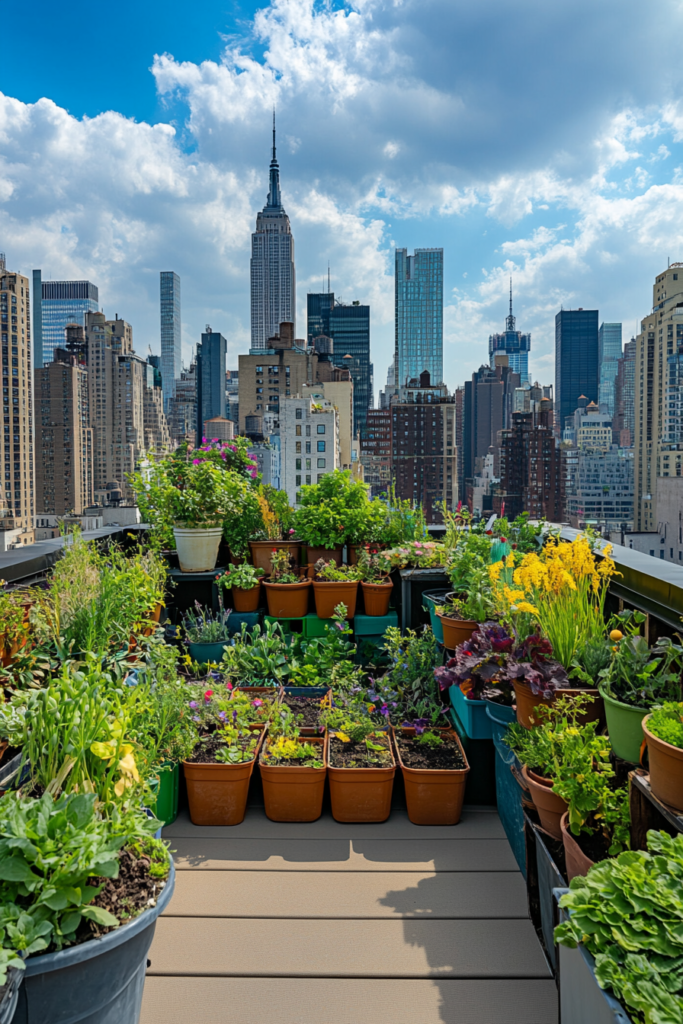
20. Recycled Fairy Garden
Use old boots, car tires, or kitchen bowls as planters. Encourage the use of recycled materials throughout the garden to promote sustainability. This garden type is a great way to teach kids about sustainability while being creative.
A recycled fairy garden is not just about making use of old materials; it’s about transforming them into something magical and meaningful. It’s a lesson in creativity and environmental responsibility wrapped into one delightful project.
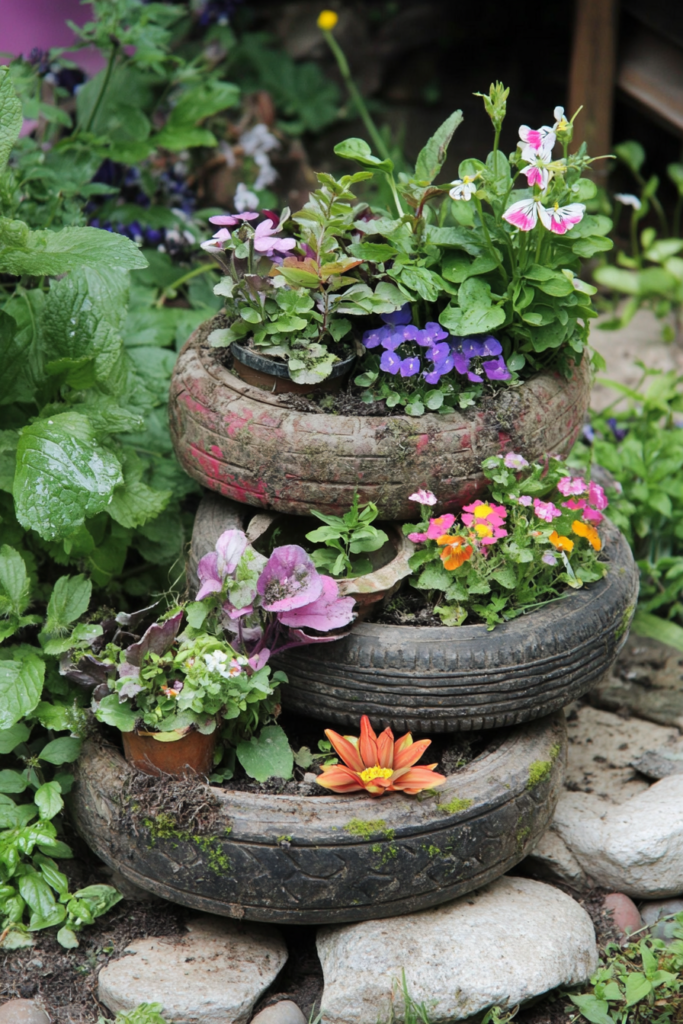
21. Travel-inspired Fairy Garden
Base your garden on different cultures, like a Japanese garden with a tiny torii gate or a Dutch-inspired garden with miniature windmills. Incorporate plants associated with each theme, like bamboo for Asian gardens or tulips for Dutch settings. This approach lets you explore and celebrate different world cultures through your gardening.
Creating a travel-inspired fairy garden is like taking a mini vacation every time you step into your yard. It’s a playful and educational way to bring the world closer to home.
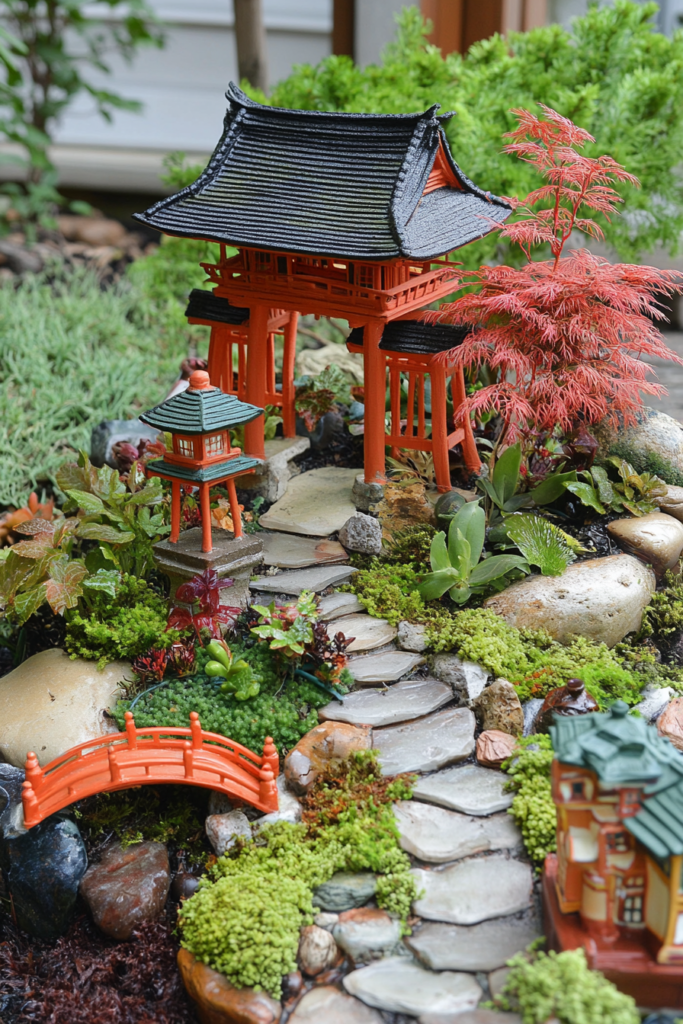
22. Nighttime Fairy Garden
Use glow-in-the-dark paints on stones and accessories to light up the garden at night. Incorporate small solar lamps that charge during the day and illuminate pathways and homes at night. The nighttime fairy garden turns into a luminous spectacle after sunset, enchanting and surprising visitors.
This garden type extends the enjoyment of your fairy garden into the evening hours, making it a stunning night-time feature in your outdoor space. It’s magical and practical, providing a gentle light and a fantastical scene.
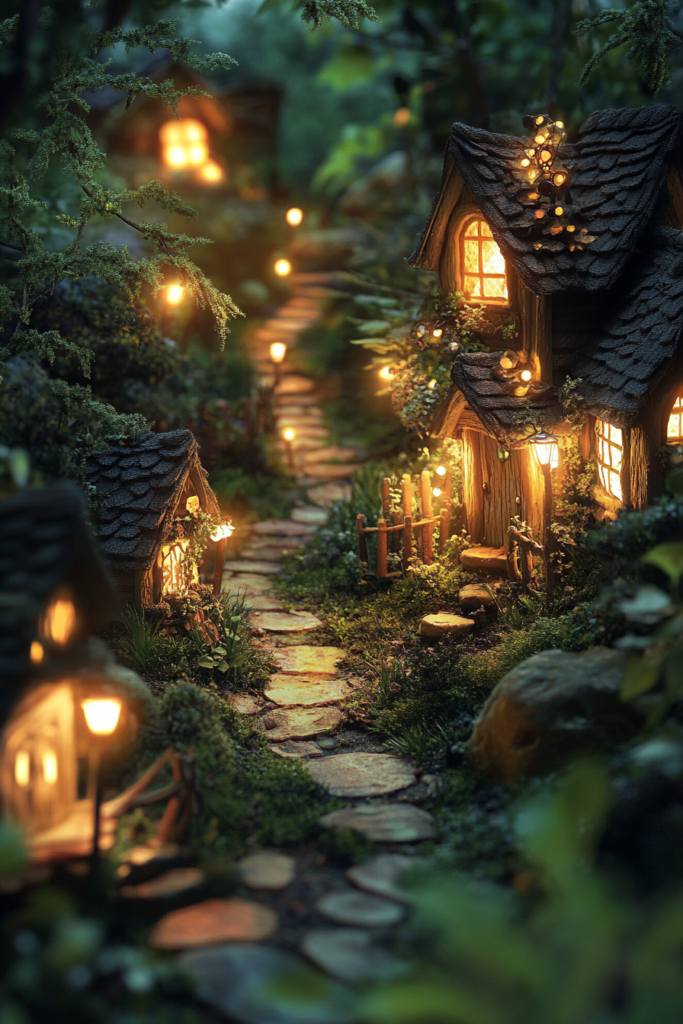
23. Fairy Village Garden
Build a sprawling village with different types of fairy houses, each representing a different family or character. Incorporate areas designed for interaction like markets, parks, and communal gardens. This garden is perfect for those who love to create stories and scenarios, offering a rich backdrop for imaginative play.
A fairy village garden is more than just a collection of miniatures; it’s a community brought to life through detailed storytelling and creative design. It’s a place where every visitor can create their own fairy tale.
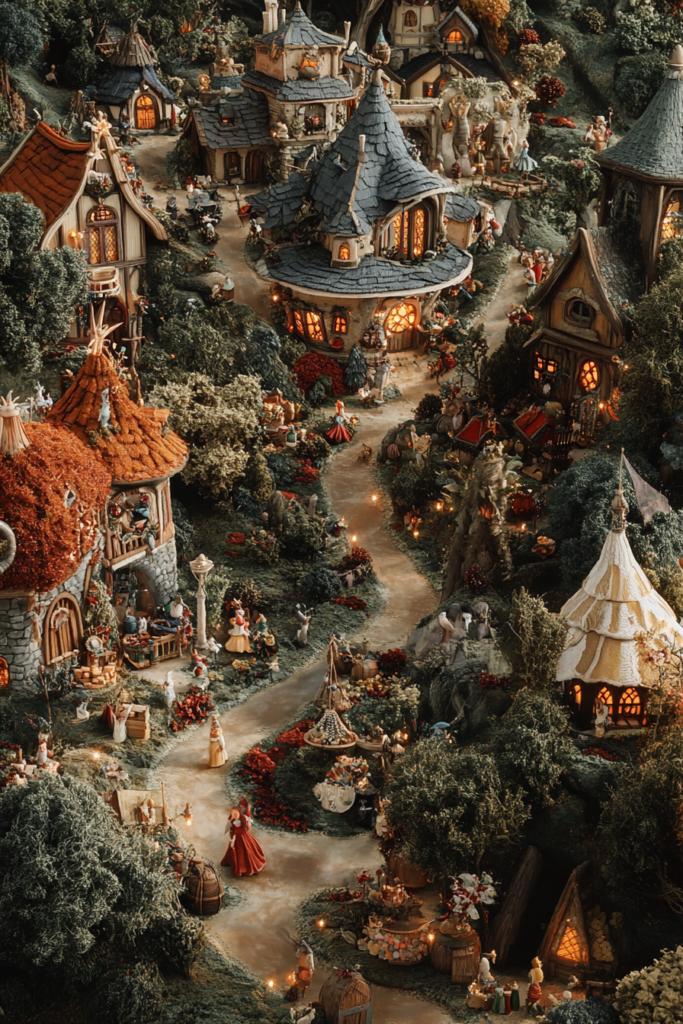
Conclusion
Fairy gardens are a delightful blend of gardening and storytelling, where each plant, stone, and miniature is a chapter in a larger tale. They foster creativity, invite daydreaming, and provide a unique way to engage with nature. Whether tucked under a tree, set on a rooftop, or glowing in the moonlight, these fairy garden ideas promise a little magic and a lot of smiles. What magical creations will sprout in your garden?

